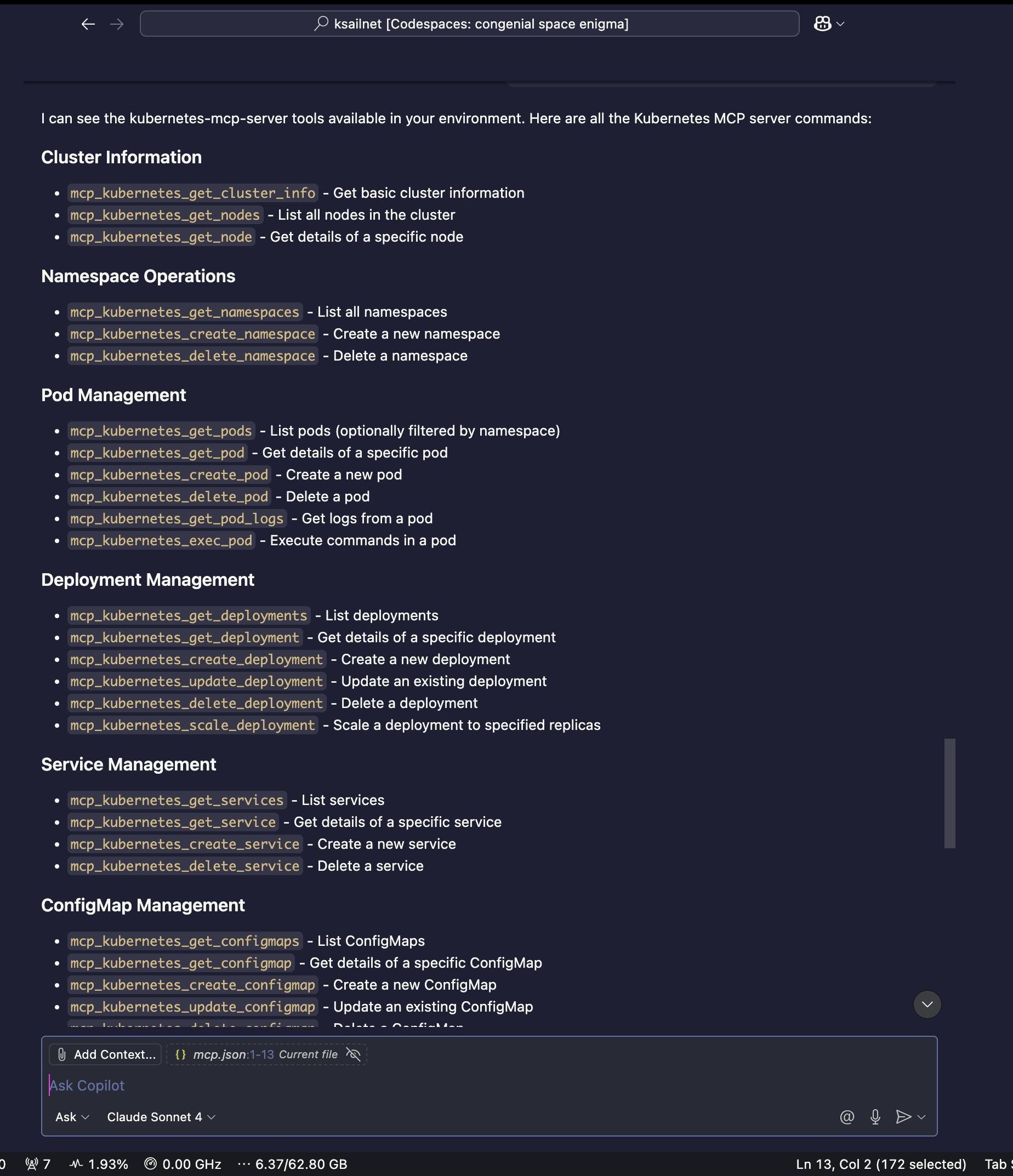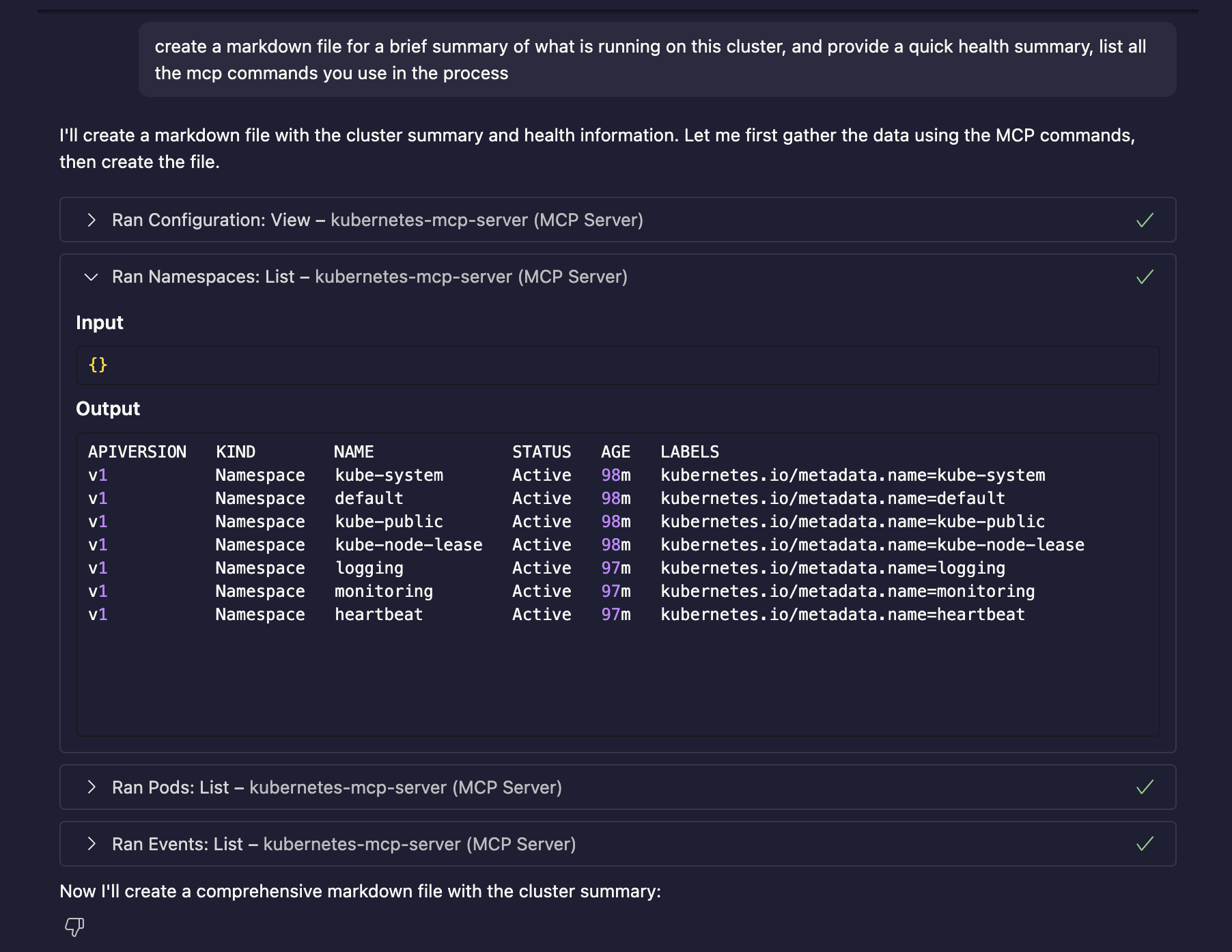🔍 Learning about MCPs
I’ve heard much about Model Context Protocol (MCP) Servers, but had yet to truly understand what they were. As I love learning new technologies, the way I do this is jumping in to try them.
The MCP website describes MCP servers as:
AI-enabled tools are powerful, but they’re often limited to the information you manually provide or require bespoke integrations. Whether it’s reading files from your computer, searching through an internal or external knowledge base, or updating tasks in an project management tool, MCP provides a secure, standardized, simple way to give AI systems the context they need.
This initially seemed like something that Copilot was already able to do by its ability to index and interact with codebases, but when I started looking into existing MCP server implementations, it quickly became clear that MCP servers are a crucial component of the future of AI. These MCP servers seem to be a way to create an interface between the LLMs and any source of information, be it a git repository, an AWS account, or even a Kubernetes Cluster. Sure, Copilot’s Agent mode can run commands and pass the output as context, but that still feels like you’re guiding it step-by-step. With MCP servers, you skip that. The AI doesn’t have to write a kubectl command and hope it gets parsed right. Instead, it just calls a function—like “get me all the pods in CrashLoopBackOff”—and instantly gets clean, structured JSON, trimmed down to exactly what it needs.
I see it as the difference between writing a bash script of kubectl commands and then trying to use sed to parse out relevant bits of information to then use to complete complex/bulk operations, and writing a python script using the Kubernetes SDK. Yes you could probably achieve what you’re trying to do with a behemoth bash script with a bunch of regex, and while that might work in the short term, you’re basically building a house outta duct tape—fragile, hard to maintain, and damn near unreadable six months from now. Python gives you structure, clarity, and actual error handling, not just a pile of || true and set -e.
🛠️ kubernetes-mcp-server by Containers
kubernetes-mcp-server is an implementation of a Kubernetes MCP server from the open source community, Containers, that built Podman, Buildah, Skopeo, etc. Some of the other implementations just wrapped kubectl commands which to me defeats the whole purpose of an MCP server. kubernetes-mcp-server is a native Go implementation that uses the same k8s.io/apimachinery Go pkgs that Kubernetes uses itself, so this made sense (also Go means no external dependencies, and unless you enjoy yak shaving with the nvm/venv hell, is a no-brainer).
🧪 Trying it out with a local k3d cluster in a Github Codespace
🔧 1. get yoself a k8s cluster
My go to way of trying things out on Kubernetes is ksailnet personal project based off of Kubernetes-in-Codespaces by CSE Labs but with some of my custom tooling on top, and a bootstrapped monitoring stack. I dropped into a ksailnet Codespace, so if you would like to follow along you will need a local k3d cluster running and VSCode with Github Copilot setup.
⚙️ 2. initialize the kubernetes mcp server
Next, I added this to my VSCode Settings via creating this file:
# file: .vscode/mcp.json
{
"servers": {
"kubernetes-mcp-server": {
"type": "stdio",
"command": "npx",
"args": [
"-y",
"kubernetes-mcp-server@latest"
]
}
},
"inputs": []
}This tells vscode to download, install, and start the kubernetes-mcp-server node module. The kubernetes-mcp-server uses the default kubeconfig so in this case authentication to the k3d cluster is already setup. Once started, Github Copilot quickly tells me that it has discovered some new tools:

▶️ 3. run it
To test it out I ask it to
create a markdown file for a brief summary of what is running on this cluster, and provide a quick health summary, list all the mcp commands you use in the process
This results in:

And creates the following:
k3d Cluster Summary
Cluster Info
- Name: k3d-k3s-default
- Nodes: 1 (k3d-k3s-default-server-0)
- Age: 97 minutes
- Status: ✅ Healthy
Namespaces (7)
default,kube-system,kube-public,kube-node-leaselogging,monitoring,heartbeatRunning Pods (7)
Namespace Pod Status Restarts kube-system coredns ✅ Running 0 kube-system local-path-provisioner ✅ Running 0 kube-system metrics-server ✅ Running 0 logging fluentbit ✅ Running 0 monitoring prometheus-deployment ✅ Running 0 monitoring grafana ✅ Running 0 heartbeat heartbeat ✅ Running 0 Health Summary
- All pods: Running (7/7)
- Restart count: 0 across all pods
- Recent events: None
- Status: 🟢 EXCELLENT - Fully operational
MCP Commands Used
mcp_kubernetes-mc_configuration_viewmcp_kubernetes-mc_namespaces_listmcp_kubernetes-mc_pods_listmcp_kubernetes-mc_events_list
As you can see in the screenshot, the LLM model is able to figure out when and what mcp commands to use, and its returned as json that it can easily interact with quickly.
🧯 Simple Troubleshooting Use Cases
- Developer: Some use cases I can see this being helpful in is for developers working with an enterprise kubernetes cluster as their development environment being able to have Copilot troubleshoot their application pods.
- Operator: Another use case that I could see is a kubernetes cluster operator using this to troubleshoot cluster issues, from having Copilot run debug pods and running exec commands, to quickly identify root cause.
🔁 Workflow Use Cases
- Developer: A developer could write a workflow that rebuilds their application’s docker image (ideally using a Docker MCP server) and pushes the image to their registry, and then updating their deployment on the cluster to use the new image tag, and then checking the logs of the pod to make sure it is running.
- Or even having Copilot add debug messages to their application, and then having Copilot deploy it and check the pod logs for the debug message; as part of an iterative agentic development workflow
- Operator: For performing complex migration tasks that require running test workloads and verifying the health of said workloads.
🔮 Future
I imagine a future where a JIRA ticket is created for a bug, assigning it to Copilot, and Copilot using a JIRA MCP server, Kubernetes MCP server, and Git MCP server to identify
- a JIRA MCP server to identify story acceptance criteria
- a Kubernetes MCP server to identify the issue and validate the fix
- a Git MCP server to commit a fix in a Pull Request
A JIRA MCP server, Kubernetes MCP Server, and Git MCP server to validate the acceptance criteria and merg—lol maybe not yet
As you can see the MCP server implementation possibilities are as endless as are AI real-world applications, but more to the point — the importance of MCP servers in the future of AIs is massive. Keep in mind I’ve focused on Github Copilot Chat use-cases because that is what is useful for me currently, but the real value is in AI-based automations. In Cloud technology, there are already vendor-created MCP servers for:
| Technology | MCP Server |
|---|---|
| Terraform | terraform-mcp-server |
| AWS | aws-mcp-server |
| Azure | azure-mcp-server |
See a full list (including Shopify, Notion): https://code.visualstudio.com/mcp
On an unfortunate note, one of the technologies that I would love to see replaced by AI automation that leverages MCP servers to interact with Enterprise Applications would be ServiceNow, but with our luck, ServiceNow will bastardize even this technology into their umbrella of vendor lock-in hell.